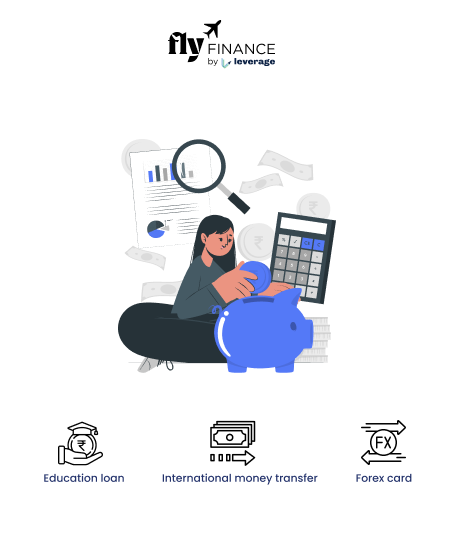Have you ever wished for the banks to automatically pay your loan EMIs or bill payments? Well, that’s possible, and the Electronic Clearance System- ECS in banking does exactly the same. It’s like setting up autopilot for your recurring payments, so you never miss a due date again.
This helps you avoid late fee charges just because your payment got delayed. But what exactly is ECS in banking, how does it work, are there any hidden charges, and what if you want to stop it? Let’s explore all these answers in this blog.
This Blog Includes:
What is ECS?
The full form of ECS is Electronic Clearing Service. It is an automated payment system used by banks in India to facilitate bulk transactions like loan EMIs, utility bill payments, mutual fund investments, and other recurring payments.
ECS is managed by NPCI (National Payments Corporation of India), which oversees key payment systems like UPI and IMPS.
It eliminates the need for manual intervention, making payments faster and more efficient. So this is what happens when you set ECS payments.
- Your loan EMI gets paid on time- automatically.
- Your electricity bill is cleared before the due date- without you remembering.
- You no longer need to pay late fees and miss payments- just smooth, stress-free banking.
How Does ECS Work?
ECS is similar to NACH (National Automated Clearing House), another bulk payment system. However, unlike NACH, ECS operates in two modes:
1. ECS Debit – Used for recurring payments where the beneficiary (like a bank, utility provider, or lender) pulls money from your account on a fixed date. Example: Loan EMIs, insurance premiums.
2. ECS Credit – Used for bulk credits, such as dividends, salary payments, or government subsidies, where funds are deposited into multiple accounts at once.
Here is the process of ECS payments:
- You authorize the bank (via a signed mandate) to allow automatic deductions.
- The beneficiary (e.g., lender, service provider) submits a debit request to their bank.
- The clearinghouse processes the request and debits your account.
- The amount is transferred to the beneficiary’s account.
Also Read: What is Proof of Payment? Meaning, Examples, Importance
Advantages of ECS
Electronic Clearance Service (ECS) simplifies your life by automating recurring payments like EMIs, utility bills, and subscriptions. It’s a reliable and time-saving method that helps you stay on track with your financial commitments without any manual effort.
Check out the benefits of setting up ECS payments-
1. Hassle-Free Automatic Payments
- No manual work! Once set up, ECS deducts payments automatically on the due date.
- Perfect for forgetful people – No more worrying about missing deadlines.
- Ideal for busy professionals – It saves time logging in every month to pay bills.
2. Avoids Late Fees & Penalties
- Late payments on loans, credit cards, or bills often lead to heavy charges (INR 100–INR 500+).
- With ECS, payments happen on time, every time, protecting your credit score.
3. Reduces Manual Payment Efforts
- No need to:
- Remember due dates
- Log in to banking apps repeatedly
- Keep track of multiple bills
- One-time setup, and you’re done!
4. Widely Accepted for Loans & Subscriptions
- Banks, NBFCs, and companies prefer ECS for:
- Loan EMIs (Home, Car, Personal Loans, or Education Loan Repayment)
- Utility bills (Electricity, Phone, Internet)
- SIPs & Mutual Funds
- Insurance premiums
Disadvantages of ECS
You must also explore the other side of the ECS. While ECS is convenient, it’s not without risks. From failed transactions to delayed cancellations, understanding the potential downsides can help you manage ECS better and avoid unnecessary penalties or disruptions.
Here are certain disadvantages of setting ECS payments-
1. Risk of Failed Payments (Low Balance = Penalty)
- If your account doesn’t have enough funds, the ECS transaction bounces.
- Result?
- Late fee from the company (e.g., lender, utility provider).
- Bank penalty (INR 5–INR 25 per failed transaction).
- Possible service disruption (e.g., electricity disconnection).
How to Avoid This?
- Set up SMS alerts for low balance.
- Keep a buffer amount in your account.
2. Cancellation Takes Time (Up to 30 Days)
- Can’t stop ECS instantly? Unfortunately, no.
- Process:
- Submit a cancellation request to your bank + the company.
- Wait 15–30 days for it to fully deactivate.
- Problem? If you don’t plan ahead, another deduction may happen before cancellation complete.
Workaround:
- Temporarily block ECS via net banking (some banks allow this).
- Maintain balance until cancellation is confirmed.
3. Bank Charges for Failed/Returned ECS
- If a payment fails (due to insufficient funds), banks charge:
- ECS return fee (INR 5–INR 25 per bounce).
- Possible late fee from the biller.
Example:
- If your EMI is INR 10,000, but you have only INR 9,800:
- Bank penalty: INR 25 (ECS return charge).
- Lender late fee: INR 500.
- Total loss: INR 525!
Should You Use ECS?
Now that we have explored the advantages and disadvantages of ECS in banking, let us understand and help you give a final verdict on whether you should use ECS or not.
ECS is GREAT for:
- People with fixed monthly expenses (EMIs, bills, SIPs).
- Those who hate remembering due dates.
- Anyone who wants to avoid late fees & penalties.
Think Twice If:
- Your income is irregular (risk of low balance).
- You frequently change banks (cancellation delays).
- You prefer manual control over payments.
However, if you are still confused, a smart tip would be to start with one bill (like a loan EMI) and see how it works. You can always add more later!
Also Read: How to Pay Canara Bank Education Loan Online? Guide to Repayment
How do I Stop or Cancel ECS Payments?
If you are tired of automatic deductions related to your loan EMI, subscription, or bill payment, stopping ECS is easy if you know the right steps. Here’s how to cancel ECS mandates permanently and regain control of your bank account.
Here the official way to stop or cancel the ECS payments-
- Contact Your Bank or Lender
- Visit your bank branch OR
- Call customer care OR
- Use net banking/mobile banking (if available).
- Submit a Cancellation Request
- Fill out an ECS/NACH cancellation form (provided by the bank).
- Some banks allow online submission (check under “Mandates” or “Recurring Payments”).
- Notify the Company Deducting Money
- Also, inform the loan provider/biller (e.g., Bajaj Finance, HDFC Bank, electricity company).
- This ensures they stop requesting payments from your account.
- Wait for Confirmation (Takes 15-30 Days)
- ECS cancellations aren’t instant.
- Keep enough balance until it’s fully processed to avoid penalties.
Change Your Linked Bank Account (Alternative Trick)
If cancellation takes too long, switch to a different account:
- Update your payment details with the lender/biller.
- No money = No deduction! (Just ensure the old account isn’t used).
Block ECS Temporarily (Emergency Fix)
Some banks let you temporarily freeze auto-debits:
- Use net banking and then look for “Stop Payments” or “Mandate Management.”
- Works as a quick fix until you cancel it permanently.
To sum up, ECS in banking simplifies recurring payments, ensuring timely transactions without manual effort.
However, always monitor your account to avoid failed payments or unwanted deductions. If you need to stop ECS, follow the correct procedure with your bank and the service provider.
If you need help managing ECS mandates, you can contact your bank for assistance or check their net banking portal for self-service options.
Check out the FAQs below for more information.
FAQs
Banks may charge INR 5–INR 25 per failed ECS transaction (if your account has low balance). Some banks don’t charge for successful ECS payments. Always check with your bank.
ECS automates loan EMIs—your bank deducts the amount every month from your account without manual intervention. Ensures timely payments and avoids late fees.
You authorize a company (like a lender) to deduct money via a signed mandate. On the due date, your bank transfers the amount automatically. No action needed from you.
Submit an ECS cancellation request to your bank + the company deducting money. Processing takes 15–30 days. Some banks allow online cancellation via net banking.
If money is wrongly debited, complain to your bank within 30 days. They’ll reverse the amount if the claim is valid.
Same as cancellation—submit a written request to your bank and the billing company. Follow up to ensure the mandate is removed.
Visit an SBI branch or use SBI Net Banking → Go to “e-Services” → “ECS Mandate” → Choose “Cancel.” You can also submit a written request.
To know more about education loans, the best bank accounts for students, forex and banking experience for global students or international money transfers, reach out to our experts at 1800572126 to help ease your study abroad experience.
| Additional Reads | |
| Full Form of CIBIL | Full Form of NBFC |
| Full Form of KYC | Full Form of POS |
| Full Form of NPA | Full Form of PAN |
| Full Form of CIF | Full Form of EMI |
| Full Form of NACH | Full Form of DPD |
Follow Us on Social Media





























